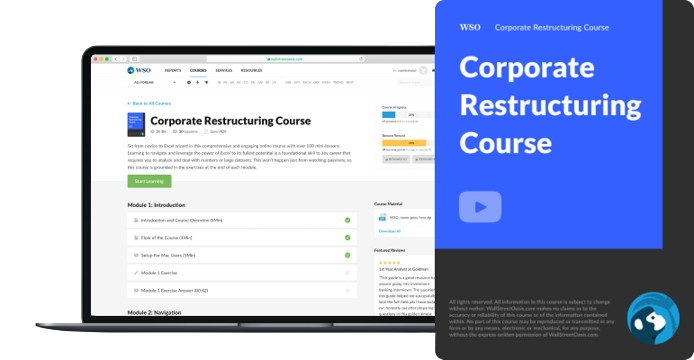Common-Pool Resources
Refer to all resource systems made available to the common public
What Are Common-Pool Resources?
Common pool resources refer to all resource systems made available to the common public. Examples include fisheries, forests, irrigation systems, and groundwater basins.
An essential characteristic of such resources is that they are rivalrous and non-excludable. They are considered a mix of public and private goods.
Being a public good, they are non-excludable. Therefore, the consumption of such resources cannot be restricted to a particular section of society. It may not be impossible to control consumption, but it could be costly to implement such measures.
In the case of fisheries and forests, the size of the resource makes it challenging to restrict consumption. As a result, consumers can potentially exploit benefits from the resource without paying for it. This differentiates them from private goods.
However, unlike some public goods, these resources have a finite supply. The goods are available for all but are scarce. Each additional unit of consumption reduces the total supply available.
These resources become competitive as consumers rival for their use. This makes them rivalrous or subtractable.
The government or related bodies can manage such resources as public goods. They can also be accessed and used collectively by communities (as a pooled resource) or private individuals (as private goods).
They are usually natural resources or a human-made system with limited quantities, considered a stock variable. Individuals or firms periodically use these resources for economic gains measured as flow variables.
A typical example is household use of a groundwater basin to satisfy individual needs.
No household can be excluded from consumption; the leftover supply reduces with each use.
Key Takeaways
- Common-pool resources encompass publicly available resource systems like fisheries, forests, and groundwater basins.
- They exhibit characteristics of both public and private goods, being non-excludable and rivalrous.
- The tragedy of the commons arises when individuals, acting in self-interest, deplete shared resources.
- Effective regulation and management of common-pool resources require careful and periodic monitoring to ensure adherence to rules and guidelines.
What is The tragedy of commons
Being non-excludable and rivalrous resources, these resources are susceptible to overexploitation, congestion, and pollution. Such a situation leads to conflict between individual and group interests.
The tragedy of the commons can be defined as a situation where:
- A common pool resource is shared by a community or a group of people
- Each consumer is free to use the resource for his economic benefit
- However, each consumer's resource use reduces the total stock available
- Consumers act in their self-interest and continue indiscriminately using the resources to maximize their benefits
- Being rivalrous, consumers compete over the use of the resource. This rivalry leads to overconsumption of the resource
- The collective behavior of all such consumers ultimately depletes the resource, and they can no longer benefit from it
The term was first coined by the British economist William Forster Llyod in 1833. The concept was further built upon by scholars like Garret Hardin, who elaborated on Lloyd's theory.
The example used by Lloyd described a common pastoral land in a community where herders brought their cattle to graze. Being a natural resource, it is non-excludable, giving every herder a right to use the pasture.
Each herder acts in their self-interest, allowing their cattle to graze beyond a fair share of land. Over time, due to the actions of each herder, the land they all relied upon is left barren, adversely affecting all herders and leading to the tragedy of the commons.
Example of Common-Pool Resources
There are other examples where individuals act in their interest, leading to resource depletion.
1. Deforestation
The continuous overexploitation of trees to produce consumer goods like furniture and paper has significantly declined forested areas worldwide.
This occurs when the resource's exploitation rate exceeds the rate at which it replenishes itself. Since planting trees and conservation methods do not provide a direct individual incentive to producers; they continue to exploit the resource.
2. Animal extinction
Instances of overfishing and overhunting are well-established examples of the tragedy of commons. Each fisher tries to maximize their profit by overfishing as they believe they compete with other anglers for the same finite resource.
This collectively leads to a large-scale reduction in the number of fish, adversely affecting all fishermen. Similarly, overhunting endangered animals affects the economic interests of all hunters involved.
3. Depletion of water resources
When groundwater basins and irrigation systems are overexploited for personal use by households, it diminishes the water resource available.
Suppose the rate at which the resource replenishes is lower than the rate of exploitation, such as during extended periods of drought. In that case, unregulated consumption depletes the emergency supply for the community, creating a tragedy of the commons.
4. Climate change
Another typical example is the detrimental impact of all individual production and consumption activities like air pollution, water pollution, land degradation, etc.
Such activities harm the environment, such as global warming and toxic waste generation, adversely affecting us. However, individual units acting in self-interest do not consider the social cost of their actions.
Each producer maximizes their output without considering the pollution caused. On the other hand, consumption activities like using cigarettes and air conditioners to fulfill individual needs harm the environment.
Controlling Common-Pool Resources
It is possible to avoid such tragedies and sustain a common pool resource long-term through institutional responses and proactive measures.
These institutional responses include actions taken by a regulating body.
Due to the non-excludable rivalrous nature of shared resources that make them vulnerable to the tragedy of the commons, governments and related bodies usually impose laws and sanctions.
The government may also opt for resource privatization by assignment of well-defined property rights.
The resource becomes excludable when property rights are assigned to an individual or firm. Instead, the owner charges a price for the use of the resource.
By commanding a price, the resource now acts as a private good. This cost imposed on consumers limits their usage of the resource. Consumers can no longer continue the indiscriminate use of the resource.
In the case of communal property, it may be possible for members to come together to take collective action to limit consumption and prevent resource depletion. This is referred to as community management.
An agreement is made among all users of the resource to follow clear rules and guidelines. A penalty system is administered for users who violate the terms of the agreement. A plan of action is also formulated to resolve conflicts.
Careful and periodic resource monitoring is required to ensure the effectiveness of regulatory measures.
Common Pool Resources FAQs
CPRs have enormous economic value that contributes to the growth of a community. Natural resources like oil have enormous economic value and contribute to the growth of communities. They are used worldwide to facilitate production activities and modern equipment.
Since many sections of society can access these resources, various communities, such as tribal communities, rely on naturally occurring forests for survival. Access, however, may be influenced by various factors.
Moreover, natural resources like sea and groundwater facilitate primary activities like fishing and agriculture in developing and underdeveloped countries. They provide the means to sustain rural livelihood.
Public roads are congestible goods. They share characteristics with public goods when there is low demand, as they are non-excludable. However, with increasing demand, they exhibit characteristics of common resources due to rivalry among users.
Roads are non-rivalrous when their demand is low. A car driving on an empty road does not reduce the availability of another vehicle.
However, when demand increases, like in the case of heavy traffic, individuals compete for space. This increases rivalry as one person driving on a busy road hinders the ability of others to do so.
Club goods are goods that are excludable and rivalrous. Examples of such goods include online content and cable TV, as consumption is restricted through memberships, but one person's use can diminish the amount available for others.
On the other hand, common resources are non-excludable and rivalrous, meaning that their use is not easily restricted, and one person's use can affect the availability of others.
Earth, as a resource available to humans, exhibits characteristics of a public good. It is non-excludable and, to some extent, rivalrous, as the resources on the planet are limited. Individuals exploit these resources for their economic benefit.
This also implies Earth is susceptible to challenges related to overuse and pollution, which can adversely affect the entire population and contribute to global environmental issues.
Global commons typically refer to specific non-excludable and rivalrous resources shared by all creatures on the planet, such as the high seas or Antarctica. These may include the air we breathe, the atmosphere, and outer space.
Local commons refer to smaller resources managed by local or tribal communities, such as forests and groundwater wells. These are often considered common-pool resources, meaning they are non-excludable and rivalrous.
Researched & Authored by Manya Bhardwaj | LinkedIn
Free Resources
To continue learning and advancing your career, check out these additional helpful WSO resources:




or Want to Sign up with your social account?